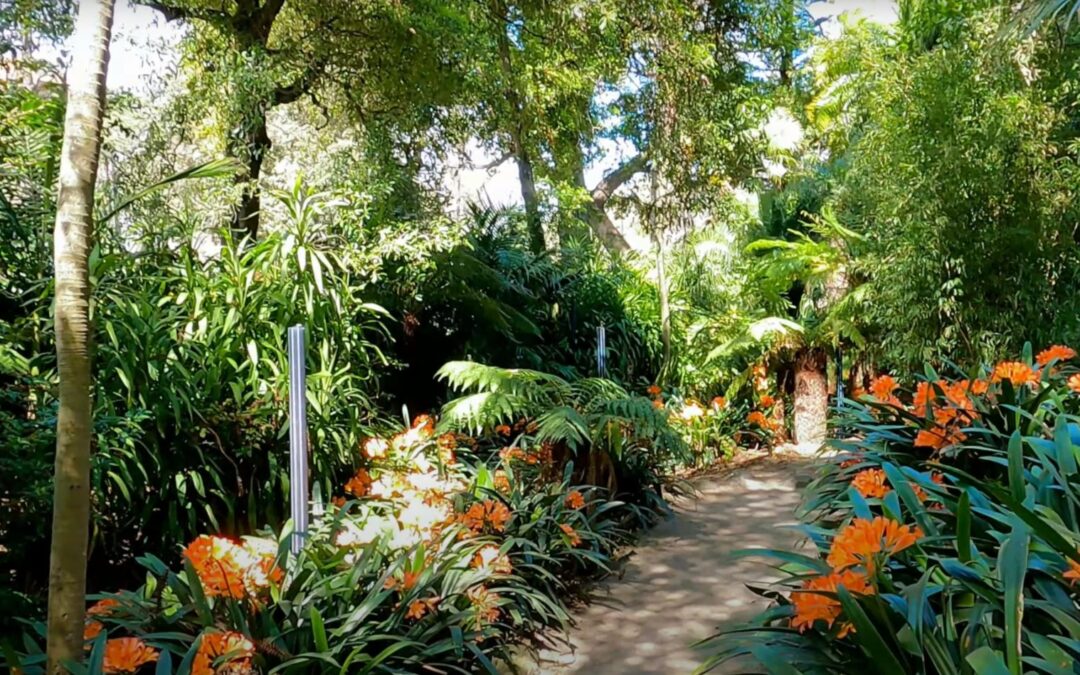The Fitzroy Gardens, located on the southeastern edge of Melbourne’s central business district in East Melbourne, Australia, cover 26 hectares (64 acres). They are surrounded by Clarendon Street, Albert Street, Lansdowne Street, and Wellington Parade, with the Treasury Gardens to the west.
These gardens are renowned for their Victorian era landscape design and contribute to Melbourne’s reputation as the “garden city” of Australia. Within the gardens, you’ll find an ornamental lake, a scarred tree, a visitor information center and cafe, a conservatory, Cooks’ Cottage (a house brought from England in the 1930s where James Cook’s parents lived), tree-lined pathways, a model Tudor village, a band pavilion, a rotunda, the famous “Fairies’ Tree,” fountains, and sculptures.
One of the prominent features of the gardens is the beautiful tree-lined pathways. Initially, the land was swampy with a creek that drained into the Yarra River. The gardens were designed by Clement Hodgkinson and planted by park gardener James Sinclair as a dense woodland with meandering pathways. The creek was landscaped with ferns and willow trees, but it had a foul smell due to sewage from nearby houses. The creek served as irrigation for the western side of the gardens for fifty years until sewerage mains were installed in the area, improving the water quality.
In the early years, fast-growing blue gums and wattles were planted to provide windbreaks. Elm trees were also planted to create beautiful avenues along the pathways, unknowingly forming a pattern resembling the Union Jack.
The gardens underwent various changes over the years. In the 1880s and 1890s, many blue gums were removed to make space for existing trees, sweeping lawns, and ornamental flowerbeds. Subtropical planting became a feature of the gardens, and major developments occurred in the 1930s and 1940s with the establishment of the Conservatory and the arrival of Cooks’ Cottage. In 2014, a garden space was reclaimed from a former depot area, featuring a stormwater harvesting system, a café, and a visitor center providing tourism information about Melbourne and specific services for Cooks’ Cottage and the Fitzroy Gardens.
The Fitzroy Gardens hold significant historical, aesthetic, architectural, scientific (horticultural), and social value to the State of Victoria. They are part of a network of public reserves established in the 19th century to provide relaxation and respite for Melbourne’s residents. The gardens are considered the flagship of this group of city gardens and contribute to the city’s garden heritage. Moreover, they hold social significance as a place for relaxation, recreation, and entertainment, serving as the people’s park in the city.
Within the gardens, you’ll find a preserved scarred tree, which serves as a reminder of the traditional custodians of the land, the Wurundjeri people, and their rich cultural heritage. The gardens are also home to various wildlife, including possums, lorikeets, ducks, microbats, and even flying foxes and powerful owls that visit at night.
The history of the Fitzroy Gardens dates back to 1848 when they were permanently reserved as public gardens. Originally known as Fitzroy Square, they were named after Sir Charles Augustus FitzRoy, a former governor of New South Wales. Notable milestones include the appointment of James Sinclair as head gardener in 1857, the establishment of paths and the band pavilion in 1862, the construction of Sinclair’s Cottage and Small Tudor-style gatekeepers’ lodge in 1864, and the erection of the neo-classical rotunda “Temple of Winds” in 1873. The gardens have seen

